Feeding your newborn can be a beautiful bonding experience, but it can also be challenging for many parents. Choosing the right baby bottle can make all the difference in ensuring your baby is comfortable and well-fed. With so many available options, selecting the perfect baby bottle can be overwhelming.
As a first-time or veteran parent, you aim to pick a baby bottle that’s safe and easy to clean. Additionally, it should promote a proper latch for your baby’s comfort. This article has compiled a list of the ten best baby bottles for safe and hassle-free feeding. Our guide helps you select the best baby bottles. It ensures a stress-free feeding experience for you and your little one.
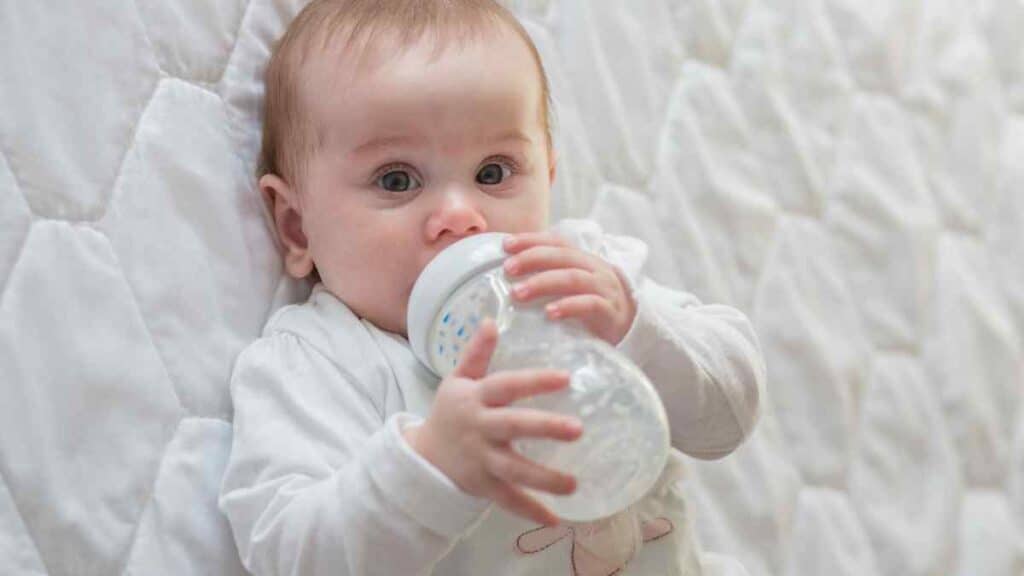
How Many Types of Baby Bottles are There?
Decades ago, parents only had glass baby bottles for formula feeding, offering limited options. Due to glass being heavy and breakable, manufacturers began creating shatter-proof, lighter plastic bottles, making glass bottles obsolete.
Parents now have a wide array of baby bottles to choose from. Let’s explore the six primary types to find the best baby bottle for your child.
Plastic Baby Bottles
Lightweight and affordable, plastic baby bottles are a popular choice among parents. Made from BPA-free materials like polypropylene, a plastic bottle is shatter-resistant and easy to handle. However, plastic bottles may require more frequent replacement as they can scratch, warp, or discolor over time. Additionally, some parents express concerns over potential chemical leaching despite BPA-free labels.
Plastic Baby Bottles with Disposable Liners
These plastic bottles feature a reusable plastic shell and a disposable, pre-sterilized liner that holds the milk or formula. As the baby feeds, the liner collapses, reducing air intake and potentially minimizing gas and colic. Although convenient and easy to clean, disposable liners can be less eco-friendly and may contribute to recurring expenses.
Plastic Baby Bottles with Glass Liners
These baby bottles combine plastic’s durability and glass’s chemical inertness. A removable glass liner inside reduces leaching risks, while the plastic exterior protects against breakage. However, these bottles can be heavier, and their dual components may require more cleaning effort.
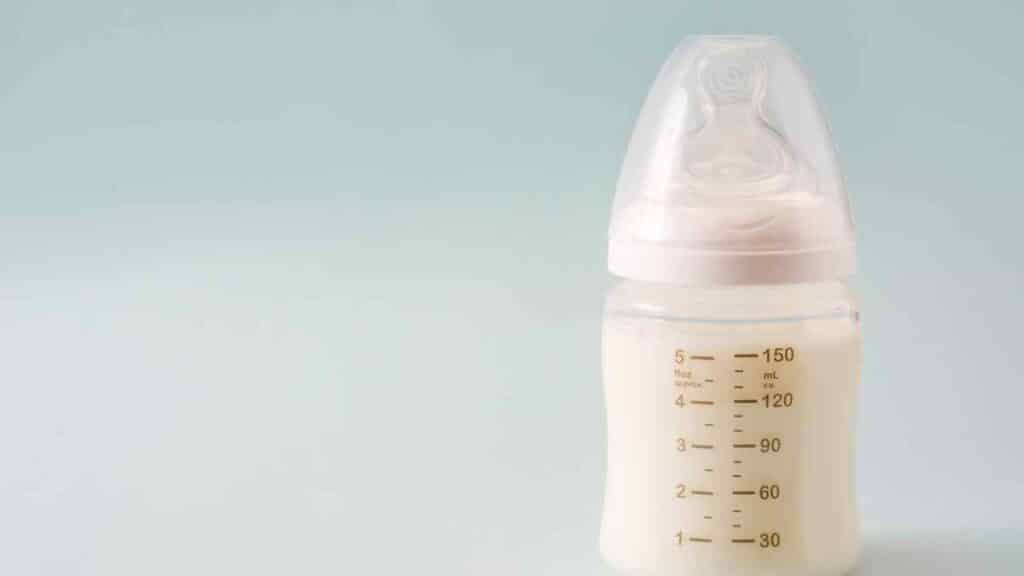
All-Glass Bottles
Made entirely of glass, these glass bottles are an eco-friendly, long-lasting option. Glass bottles are chemically stable, ensuring no harmful substances leach into the baby’s milk. These glass baby bottles are also suitable for heating and cooling without the risk of warping. Despite their durability, glass bottles can be heavier and more prone to breakage, necessitating extra care when handling.
Silicone Baby Bottles
Made from high-quality, food-grade silicone, these baby bottles are soft, flexible, and resistant to breaking. Silicone bottles are ideal for breastfed babies transitioning to bottle-feeding, as the supple texture can mimic the feel of a mother’s breast. Unlike glass bottles, they are also easy to clean and maintain.
Angled Neck Bottles
These innovative baby bottles have an angled neck design, which can help reduce the amount of air swallowed by the baby during feeding, making them a popular choice for parents dealing with colicky or gassy infants [2]. Some also refer to them as anti-colic baby bottles because of how efficiently they address the air bubbles inside the baby bottle.
Stainless Steel Bottles
Durable, lightweight, and free of harmful chemicals, stainless steel bottles are an eco-friendly option. However, compared to other variants on the list, like soft silicone, they can be more expensive than other types of bottles.
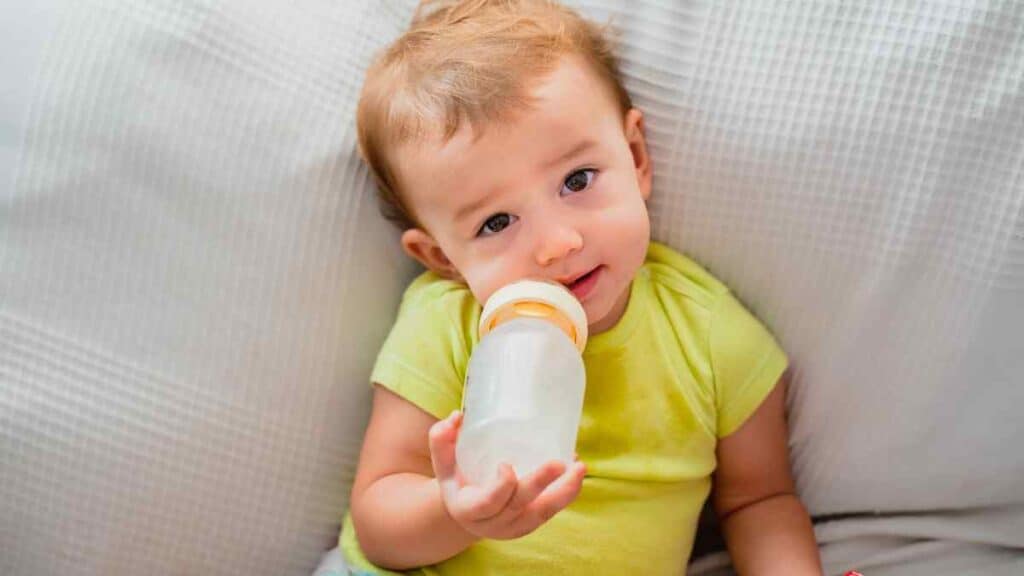
Does Nipple Shape and Design Matter?
While the baby bottle itself is essential, another crucial aspect to consider is the nipple shape and design. This column will discuss why nipple shape and design matter and how to select the right one for your baby’s needs.
Nipple shape and design play a significant role in your baby’s feeding experience, impacting factors such as latch, milk flow, and overall comfort. There is no one-size-fits-all solution for nipple choice, and finding the right fit for breastfed babies may require trial and error. Here are some common nipple shapes and designs to consider:
Types of Baby Bottle Nipples
Traditional Bell-Shaped Nipples
These nipples mimic the natural shape of a mother’s breast, making them a popular choice for many parents with breastfed babies. They are typically made of silicone or latex and come in various flow rates to accommodate your baby’s needs as they grow.
Orthodontic Nipples
Designed with your baby’s oral development in mind, orthodontic nipples have an asymmetrical shape that fits the palate and promotes proper tongue positioning. Many parents who are exclusively bottle-feeding their child find these nipples helpful in reducing nipple confusion for breastfed babies who are used to breast milk, as they encourage a similar latch when breastfeeding.
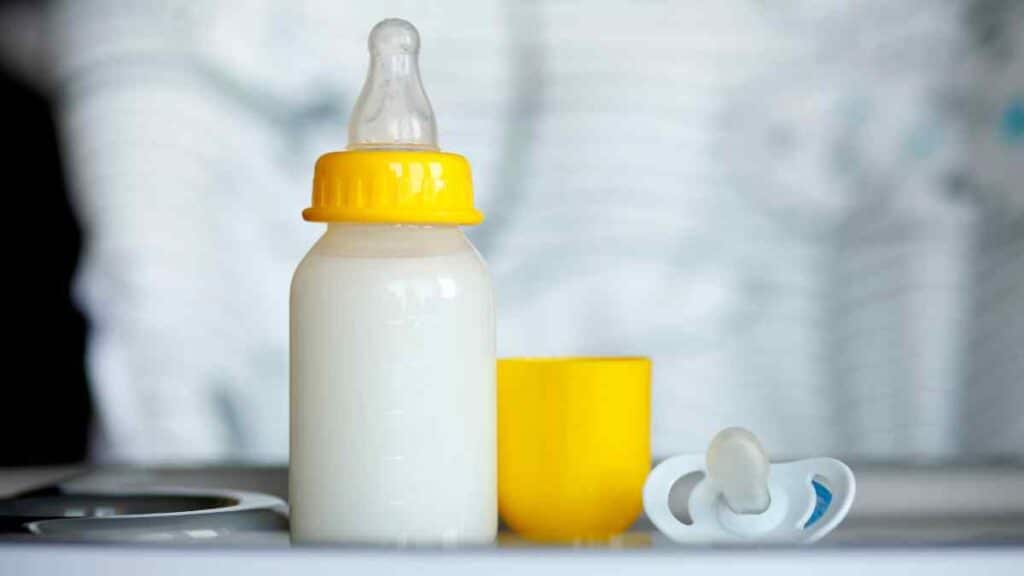
Flat-Topped Nipples
These nipples have a wide, flat top that resembles the shape of a mother’s nipple when compressed during breastfeeding. Flat-topped nipples can benefit every breastfed baby transitioning to baby bottle feeding, as they encourage a wide latch and help prevent nipple confusion with their mom’s breast, even when using larger bottles.
Anti-Colic Nipples
Designed to minimize air ingestion during feeding, anti-colic nipples often feature vents or valves that release air back into the baby bottle rather than allowing it to enter the baby’s stomach. These designs may help reduce colic babies’ gas, colic, and spit-up. It’s also advisable for gassy babies because of its anti-colic vents.
Essential Factors to Consider When Buying a Baby Bottle
Now that you have a better understanding of nipple options, it’s crucial to consider other factors when selecting the best baby bottles. Let’s delve into the essential aspects to remember when buying a baby bottle, including shape, material, nipple, bottle size, and venting features.
Bottle Shape
Baby bottles come in various forms, from traditional straight bottles to curved and angled bottle shape designs. The baby bottle’s shape can impact your baby’s feeding experience, as some shapes are designed to reduce the amount of air swallowed during feeding, potentially minimizing colic and gas. Consider your baby’s specific needs and your comfort when choosing the shape of the baby bottle.
Material
As discussed earlier, baby bottles are available in different materials, including plastic, glass bottle, silicone, and plastic with liners. Each material has advantages and disadvantages, such as weight, durability, and ease of cleaning. Evaluate which material best suits your lifestyle, budget, and preferences.
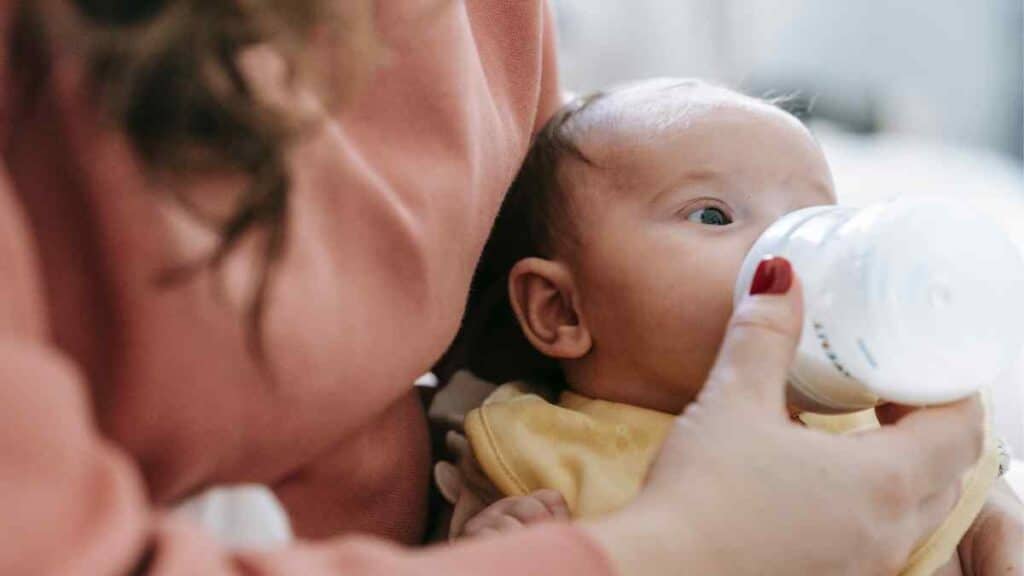
Nipple
Choosing the right nipple for your baby is essential, as it can impact their feeding experience and comfort. Factors you can consider include the nipple’s flow rate, material, and shape. Remember to choose a nipple that closely mimics your baby’s preferred feeding style, whether breastfeeding or bottle-feeding.
Bottle Size
Baby bottles come in various sizes, typically 4 to 12 ounces. Smaller baby bottles are ideal for newborns and younger infants, while larger baby bottles can accommodate the increased appetite of older babies. Consider purchasing a few sizes to meet your baby’s changing needs as they grow.
Venting Features
Many baby bottles, including every basic glass bottle, have venting systems designed to reduce the air your baby swallows during feeding. This feature can help alleviate colic, gas, and fussiness. Venting features may include built-in vents, straw-like tubes, or vented nipples. Evaluate the effectiveness and ease of cleaning when selecting a baby bottle with venting features.
Best Baby Bottles of 2023
Comotomo Bottles
Comotomo Baby Bottles have a unique design that mimics the shape and feel of a mom’s breast. It’s also easy to clean and has dual vents design features with an anti-colic valve, making it ideal for the baby’s tummy.
Dr. Brown’s Options+ Wide-Neck Glass Baby Bottles
Dr. Brown’s bottles are ideal for breastfed babies because it is easy to fit most breast pumps. It’s also clinically proven to reduce colic because of its anti-colic system. But what makes Dr. Brown’s bottles unique is that it preserves essential vitamins which are essential for most babies’ growth.

PopYum Anti-Colic Baby Bottles
Popyum anti-colic baby bottles have anti-colic nipples and vents that reduce gassiness and air bubbles from the baby bottle. They also have various designs and options, making them ideal for formula and breast milk.
Playtex Nurser
Playtex nurser baby bottle products are ideal for parents who are always on the go. These plastic bottles have a simple liner system that mimics the breastfeeding experience for breastfed and formula-fed babies. Its slow-flow nipples are also top rack dishwasher-safe, which is why many parents consider it one of the best baby bottle products on the market.
Nanobebe Breastmilk Baby Bottles
Nanobebe breastmilk baby bottles are silicone bottles for breastfed babies. These are uniquely designed silicone bottles that help you save space inside your fridge by allowing you to stack one baby bottle on top of another. Besides its slow-flow nipple and anti-colic design features, its quick-cooling baby bottle design feature also reduces bacterial growth and overheating, which helps you save nutrients during formula feeding.
Philips Avent Natural Bottles
Philips Avent is another one of the best baby bottles of 2023 because of its perfect size for preemies. Similar to the Comotomo baby bottle, the Philips Avent baby bottle is also considered an anti-colic bottle because of its soft silicone sleeve. Besides its slow-flow nipple feature, these anti-colic baby bottles are also dishwasher safe, making them ideal for busy parents [3].
MAM Easy Start Anti-Colic Bottles
MAM Easy start anti-colic baby bottles are another one on the list that you need to purchase for your growing toddler. Not only are they considered anti-colic bottles because of their slow-flow nipples and their anti-colic valve, but it’s also dishwasher-safe and can also be cleaned even with a bottle brush.
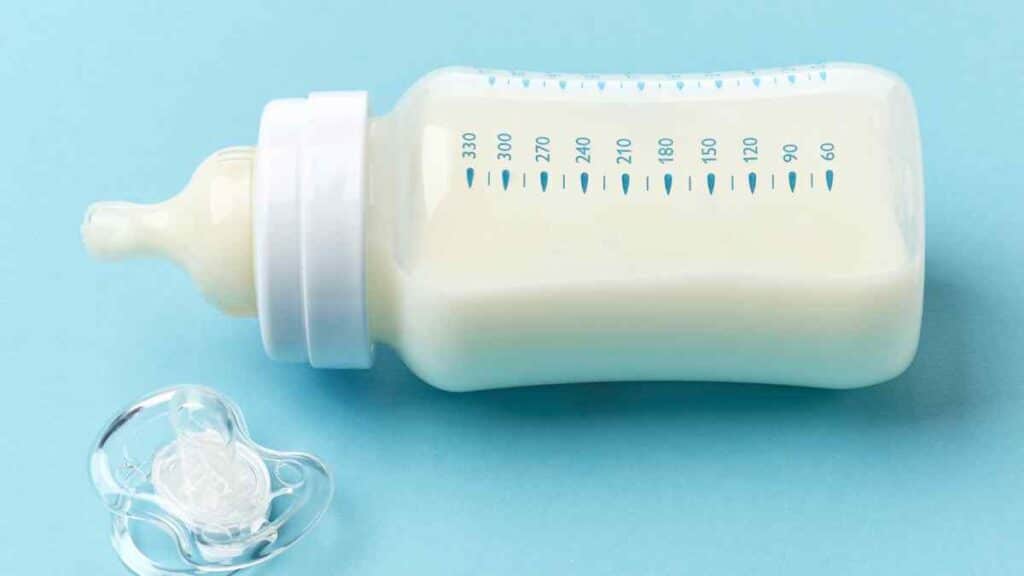
Munchkin Latch Bottles
Munchkin Lath bottles are another one of the best baby bottles on the list because of their BPA-free design feature. It’s also easy to clean compared to almost all baby bottle market products to date. Besides the anti-colic valve, the pump adaptor is also compatible with almost every breast pump model, including Medela and Evenflow, making it ideal even for larger bottles. It’s also easy to clean and would only require you to use a bottle brush to reach the inside.
Tommee Tippee Bottles
Unlike most baby bottles, Tommee Tippee bottles are shaped like a mom’s breast, making them ideal bottles for breastfed babies. They also have a breast-like nipple that resembles the skin, making babies comfortable using them. This is why many moms consider them one of the best baby bottles on the market these days.
Kiinde Twist Squeeze Natural Baby Breast Milk Feeding Bottles
The last on the list of the best baby bottles is Kiinde Twist Squeeze Bottles. Similar to most bottles on the list, most adapters also connect to the baby’s bottle products, making it easier for parents to transfer products from one bottle to another. This silicone bottle product also has a twist pouch design that snaps into place for anti-colic feeds with fewer pieces to clean.
Essential Steps to Keep The Best Baby Bottle Sterilized
Now that you’ve learned the basics about the best baby bottles of 2023, it’s now time to learn how to maintain their cleanliness and sterility to ensure a safe and enjoyable feeding experience. Let’s discuss the vital steps to sterilize your baby’s bottles and accessories so that your hungry baby drinks from a safe and hygienic container every time.

Rinse Immediately After Using
To prevent bacteria growth and make cleaning easier, always rinse the bottle, nipple, and other components with cold water immediately after feeding. This helps remove residual milk or formula, which can harbor harmful bacteria.
Disassemble and Wash
Before sterilization, disassemble the bottle, separating the bottle nipples, anti-colic valves, and other parts. Use warm soapy water and a soft brush for baby bottles to clean each component thoroughly. Pay special attention to the crevices and hard-to-reach areas where bacteria may linger.
Sterilize Regularly
Sterilizing your baby’s feeding equipment is essential, especially during the first few months of their life when their immune system is still developing. There are several methods to sterilize, including boiling, using a microwave or electric steam sterilizer, a bottle warmer, or using sterilizing tablets or solutions. Choose the method that works best for you and follow the manufacturer’s instructions for optimal results.
Allow to Air Dry
After sterilization, place the clean components on a dry surface or drying rack, allowing them to air dry. Avoid using a towel to dry, as this can introduce bacteria to the sterilized items. Ensure all parts are completely dry before reassembling the bottle to prevent mold growth.
Store Safely
Store the sterilized and dry bottles and components in a clean, dry place, such as a sealed container or cupboard, to keep them free from dust and bacteria until their subsequent use.
Regularly Inspect
Check the bottle, bottle nipples, and other components for any signs of wear, damage, or discoloration. Replace any worn or damaged parts promptly to maintain the best baby bottle’s safety and effectiveness.
Bonus Tip: If you’re using a bottle warmer, ensure it’s cleaned and descaled regularly to prevent the buildup of bacteria and mineral deposits.
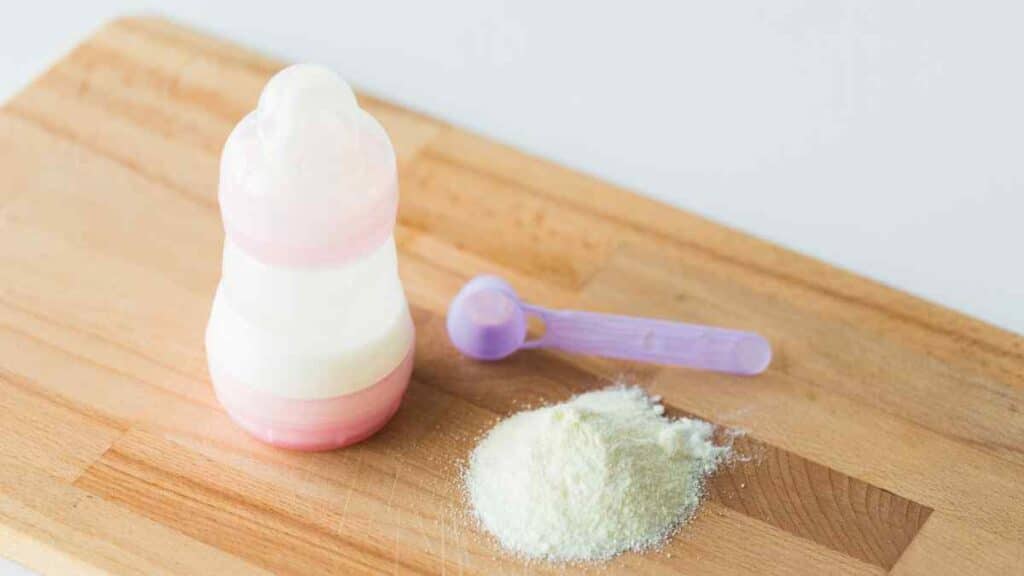
Conclusion
Finding the best baby bottles for your little one is essential to ensure a safe, comfortable, and hassle-free feeding experience. Now that we’ve discussed the best baby bottles, we hope you’ll find feeding younger babies with more milk without affecting their tummies is easier.
Always prioritize BPA-free materials, and consider features like anti-colic systems to help alleviate gas and acid reflux in younger babies. Also, choose bottles that are easy to clean and transport even in your diaper bag.
As you embark on this beautiful journey of parenthood, remember that the best baby bottle for your child will depend on their unique needs and preferences. Don’t hesitate to experiment with different types and features to find the perfect fit for your family. Happy feeding!
If you have any questions, please feel free to leave a comment below. I would be happy to help!



